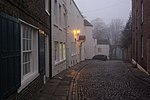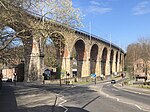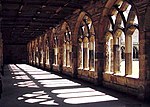Durham School
Durham School is an English independent boarding and day school in Durham, North East England and was an all-boys institution until 1985, when girls were admitted to the sixth form. The school takes pupils aged 3–18 years and became fully co-educational in 1998. A member of the Headmasters' and Headmistresses' Conference, it enrolls 650 day and boarding students. Its preparatory institution, known as Bow, Durham School, enrolls a further 160 pupils. Durham and Bow's former pupils include politicians, clergy and British aristocracy. Former students are known as Old Dunelmians. Founded by the Bishop of Durham, Thomas Langley, in 1414, it received royal foundation by King Henry VIII in 1541 following the Dissolution of the Monasteries during the Protestant Reformation. It is the city's oldest institution of learning.
Excerpt from the Wikipedia article Durham School (License: CC BY-SA 3.0, Authors).Durham School
Quarryheads Lane, Durham Viaduct
Geographical coordinates (GPS) Address Website External links Nearby Places Show on map
Geographical coordinates (GPS)
| Latitude | Longitude |
|---|---|
| N 54.771576 ° | E -1.583024 ° |
Address
Durham School
Quarryheads Lane
DH1 4SZ Durham, Viaduct
England, United Kingdom
Open on Google Maps









